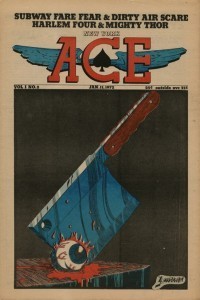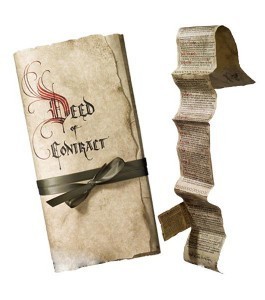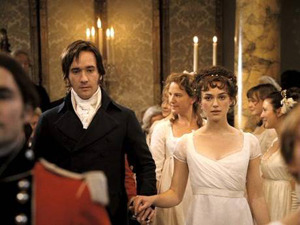The Paris Review's Blog, page 854
January 22, 2013
The Eye of the Storm
 Alan Shenker, an artist known among the underground cartoonists of the late sixties as Yossarian, died last week, in New York, at the age of sixty-seven. Born in Levittown, he was a downtown habitué and his work was published in the East Village Other, among many other publications of the era.
Alan Shenker, an artist known among the underground cartoonists of the late sixties as Yossarian, died last week, in New York, at the age of sixty-seven. Born in Levittown, he was a downtown habitué and his work was published in the East Village Other, among many other publications of the era.
A kind of ruthless patricide was implicit in Yossarian’s cover art for the February 1972 issue of the New York ACE. He was close to “the Arab,” as the East Village Other’s editor, Yaakov Kohn, was known, and now Yossarian was one of the defectors from the already tottering EVO to the new paper which I’d cofounded with Robert “Honest Bob” Singer. Read More »
Parsing Middle Earth Contract, and Other News
Listen to contemporary masters such as Charles Baxter and Siri Hustvedt read ten Sherwood Anderson stories.
“Most of the topography turns out to be relatively straightforward. The Ministry of Truth, where Winston Smith sits falsifying back-numbers of the Times, is the University of London’s Senate House building in Malet Street. Big Brother’s statue in Trafalgar Square, now rechristened ‘Victory Square,’ adorns the plinth previously reserved for Nelson, while the waxworks museum on the square’s eastern side, where visitors queue to inspect tableaux of military atrocities, is the Church of St Martin-in-the-Fields put to sinister propagandist use.” Mapping 1984.
“So far the dwarves haven’t committed any unsalvageable drafting errors or done anything that might jeopardize the validity of the contract.” A lawyer examines the dwarves’ contract from The Hobbit.
“Write drunk,” and other (questionable?) advice from famous writers.
January 18, 2013
“Things Grown-Ups Talk About”
 Today is A. A. Milne’s birthday. While he is certainly best known as the creator of Winnie the Pooh, Milne was a prolific writer who came to resent his association with the beloved bear of very little brain. One of the more intriguing episodes of Milne’s life is his feud with author P. G. Wodehouse.
Today is A. A. Milne’s birthday. While he is certainly best known as the creator of Winnie the Pooh, Milne was a prolific writer who came to resent his association with the beloved bear of very little brain. One of the more intriguing episodes of Milne’s life is his feud with author P. G. Wodehouse.
The two men were initially friends: exactly the same age, and both comic writers, they moved in the same circles in 1920s London, playing on the same cricket team and contributing to many of the same publications. In 1928, they even collaborated on the adaptation of Wodehouse’s A Damsel in Distress. By the 1930s, their friendship had cooled somewhat—Wodehouse defenders cite jealousy—but it wasn’t until World War II that things became actively hostile. Read More »
The Characters of Les Misérables are Sad
Here is a mood index chart for Les Misérables. Red indicates negative emotions. There is a reason miserable is in the title.
What We’re Loving: Tropical Paradise, Anxiety, Translation
 When the novelist Adam Thirlwell told me his idea, I was skeptical: to publish fiction in many translations, each version being a translation of the one before. But Adam Thirlwell is Adam Thirlwell, “schemey like a nine-year-old,” as one collaborator described him, with “weird vibes, as if he does unorthodox things to the books he carries to the bathroom.” MULTIPLES, the new issue of McSweeney’s, edited by Thirlwell, is an unorthodox thing of beauty, a stunt that only a kid would attempt, and an absolute pleasure to read—though almost nobody on earth will be able to read every page. What Thirlwell has done is to assemble new or obscure works by Kierkegaard, Vila-Matas, Krasznahorkai, et al, translated (and retranslated, and retranslated) by a dream team of polyglot writers. So, for example, Dave Eggers translates a Spanish translation by Alejandro Zambra of an English translation by Nathan Englander of a Hebrew translation by Etgar Keret of an English translation by John Wray of a previously untranslated short story by Franz Kafka. It’s a game of pro-level Chinese whispers, and—thanks to Thirlwell's list of contributors—a wide-angle snapshot of our literary firmament, circa now. Plus, the afterwords by Thirlwell and Francesco Pacifico have persuaded me not only that it would be fun to read Emilio Gadda in Italian, but that there is more fun to be had with untranslatable writers than I ever dared to dream. —Lorin Stein
When the novelist Adam Thirlwell told me his idea, I was skeptical: to publish fiction in many translations, each version being a translation of the one before. But Adam Thirlwell is Adam Thirlwell, “schemey like a nine-year-old,” as one collaborator described him, with “weird vibes, as if he does unorthodox things to the books he carries to the bathroom.” MULTIPLES, the new issue of McSweeney’s, edited by Thirlwell, is an unorthodox thing of beauty, a stunt that only a kid would attempt, and an absolute pleasure to read—though almost nobody on earth will be able to read every page. What Thirlwell has done is to assemble new or obscure works by Kierkegaard, Vila-Matas, Krasznahorkai, et al, translated (and retranslated, and retranslated) by a dream team of polyglot writers. So, for example, Dave Eggers translates a Spanish translation by Alejandro Zambra of an English translation by Nathan Englander of a Hebrew translation by Etgar Keret of an English translation by John Wray of a previously untranslated short story by Franz Kafka. It’s a game of pro-level Chinese whispers, and—thanks to Thirlwell's list of contributors—a wide-angle snapshot of our literary firmament, circa now. Plus, the afterwords by Thirlwell and Francesco Pacifico have persuaded me not only that it would be fun to read Emilio Gadda in Italian, but that there is more fun to be had with untranslatable writers than I ever dared to dream. —Lorin Stein
The editors of the New York Times blog Anxiety recently asked Laszlo Krasznahorkai to contribute an essay on the theme. This is the writer who eschews paragraph breaks and short sentences because he feels they are artificial and whose subjects are often very bleak—which is to say, he’s their ideal contributor. The author himself describes it as “a lyrical essay about the terrible meeting between boorishness and aggressiveness,” but with Krasznahorkai, it’s so much more than that. There are paragraph breaks and the occasional brief sentence (one wonders if the former appeared in the original version), but this is a hard little gem, a Möbius strip of what feels simultaneously like madness and utter logic. —Nicole Rudick
The Netherfield Ball, and Other News
In honor of Pride and Prejudice’s two hundredth anniversary, the BBC is re-creating the Netherfield Ball at Chawton House, Hampshire. The unfortunately named Pride and Prejudice: Having A Ball at Easter, which will air on BBC 2, is for some reason ninety minutes long, and we would like an invitation.
The Bell Jar , meanwhile, is a spring chicken at fifty.
Philip Roth disagrees with most readers as to which of his novels are the best.
What is the obsession with ranking things? May we rephrase? Here are a few of America’s best bookstores.
If Mr. Eliot had to have a day job, why is it that writers and poets today are so cagey about what they do to pay the bills? Or, as someone at a Williamsburg party once put it, “What do you do—not for money?”
January 17, 2013
Carol Summers, Untitled, 1967
Since 1964 The Paris Review has commissioned a series of prints and posters by major contemporary artists. Contributing artists have included Andy Warhol, Robert Rauschenberg, Helen Frankenthaler, Louise Bourgeois, Ed Ruscha, and William Bailey. Each print is published in an edition of sixty to two hundred, most of them signed and numbered by the artist. All have been made especially and exclusively for The Paris Review. Many are still available for purchase. Proceeds go to The Paris Review Foundation, established in 2000 to support The Paris Review.
Source of All Joy: On Alina Szapocznikow
Alina Szapocznikow. Petit Dessert I (Small Dessert I). 1970–71. Colored polyester resin and glass, 3 3/16 x 4 5/16 x 5 1/8″ (8 x 11 x 13 cm). Kravis Collection. © The Estate of Alina Szapocznikow/Piotr Stanisławski/ADAGP, Paris. Photo by Thomas Mueller, courtesy Broadway 1602, New York; and Galerie Gisela Capitain GmbH, Cologne
The Polish sculptor Alina Szapocznikow made a career of disassembling the body, of exposing its weaknesses, its many vulnerabilities, whether through the uses and abuses it’s been put to in the abattoir of twentieth-century history or at the mercy of the more mundane, if no less fatal, everyday mortality. If that sounds like a bit of a downer, worry not: Szapocznikow managed to keep a sly tongue firmly in cheek, and her work, for all its startling beauty, its nearly unbearable intimacy, its sublime evocation of pain and disease and suffering, is witty, even funny.
Her sculptures—on display, through January 28, at the Museum of Modern Art, where they are presented as part of a retrospective entitled “Alina Szapocznikow: Sculpture Undone, 1955–1972”—indulge in the darkest shade of black humor, extracting their punch lines from abysmal pockets of human experience. Take, for example, her Lampe-bouche (Illuminated Lips) (1966), a series of resin casts of a female mouth set atop metal stands and wired to work as lamps.Read More »
Sharon Olds, “Diagnosis”
Sharon Olds has won the T. S. Eliot prize for Stag’s Leap, a deeply personal project which she says was inspired in large part by her husband leaving her for a younger woman. The collection, which took Olds fifteen years to write, was praised by the judges as “a tremendous book of grace and gallantry which crowns the career of a world-class poet.” Olds is the first female American poet to win the Eliot prize since its founding, in 1993. Below, Olds reads from Stag’s Leap.
Watch Weekly Poem: Sharon Olds Reads 'Diagnosis' on PBS. See more from PBS NewsHour.
Yellow Sky
Black Crow Road
A week before the tornado outbreak in May of 1999, I attended my first Native American sweat with my friend A. J., a security guard and blackjack dealer at a Cheyenne-Arapaho casino located in the town of Concho. I’d known A. J. since eighth grade, when we used to smoke cigarettes and catch crawdads in the creek behind his grandfather’s house. His grandfather sat in a recliner and smoked a pipe and spent whole afternoons staring out the window. He talked to us about luck. Good luck, bad luck. He once told us to pay attention to wind and smoke. If wind drifted the smoke east, that meant good luck. But only east. Crows are good luck, he told us, because they fly high and carry prayers to the spirits, whereas owls are considered bad luck. Rain is good luck, but only when the sun is shining. Strong winds are good luck because they are personified as divine spiritual messengers. Even ridiculously high winds that bring down power lines and trees are still considered good luck, regardless of their destruction: the overall speed of wind is unimportant because many tribes look at the path of winds as the soul of a spirit sweeping across the land. I’ve never been much into superstitions, but listening to A. J.’s grandfather talk about all this when I was a kid made me realize this was some serious shit.
The Paris Review's Blog
- The Paris Review's profile
- 305 followers









